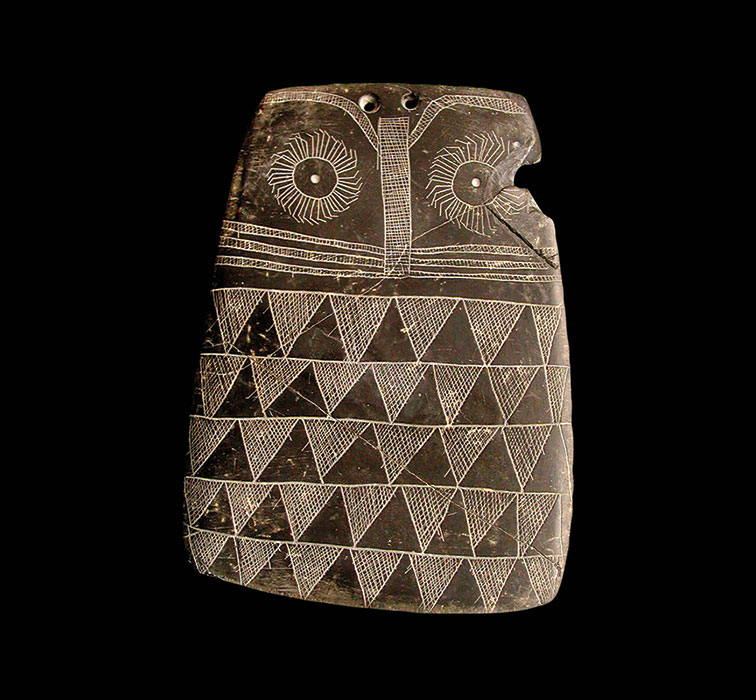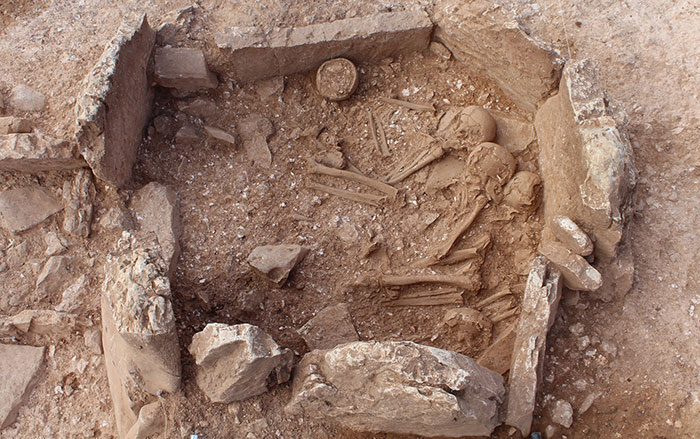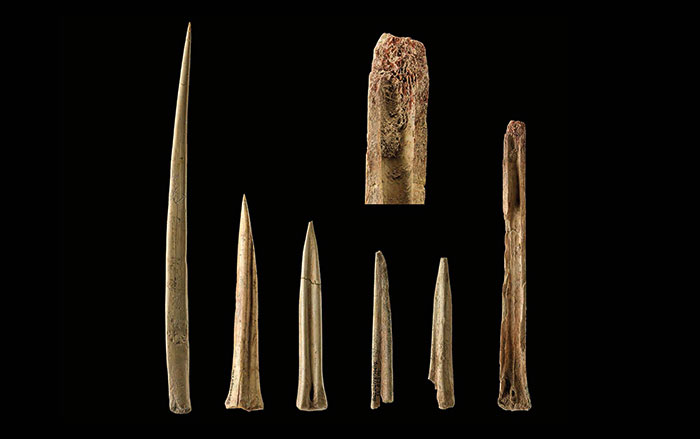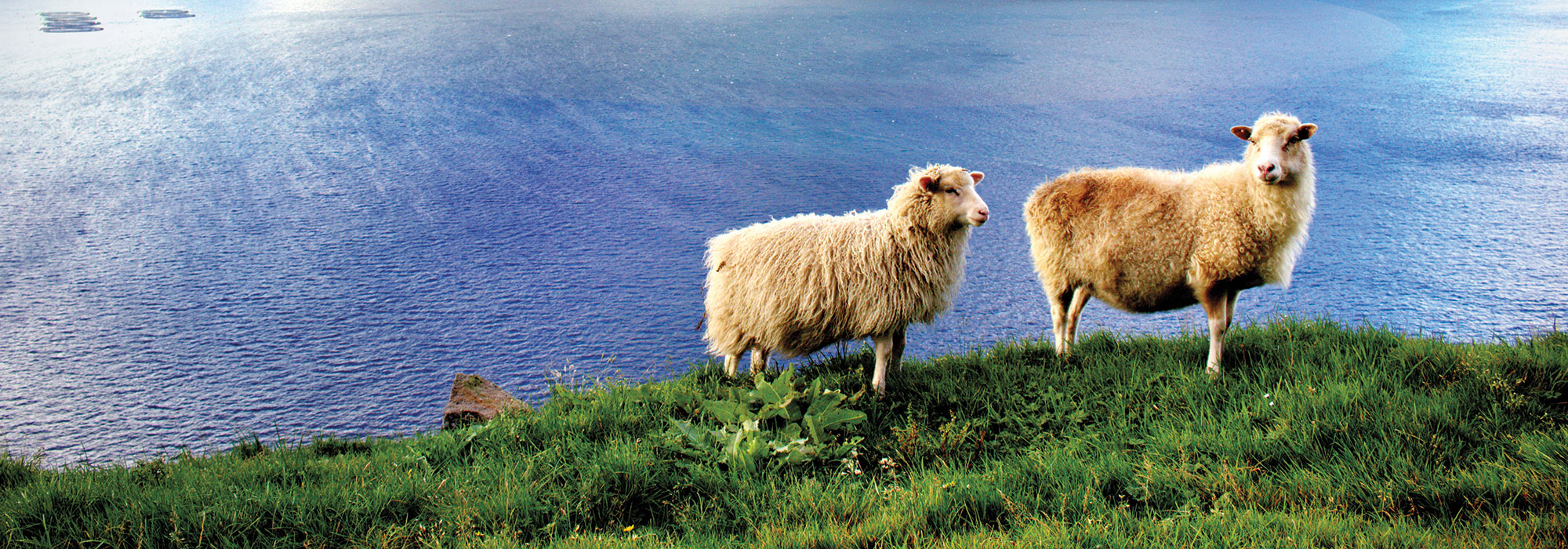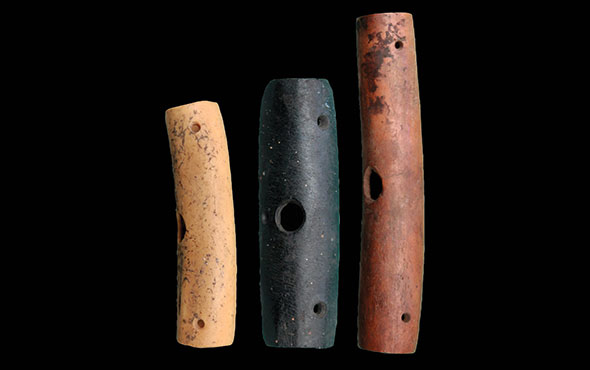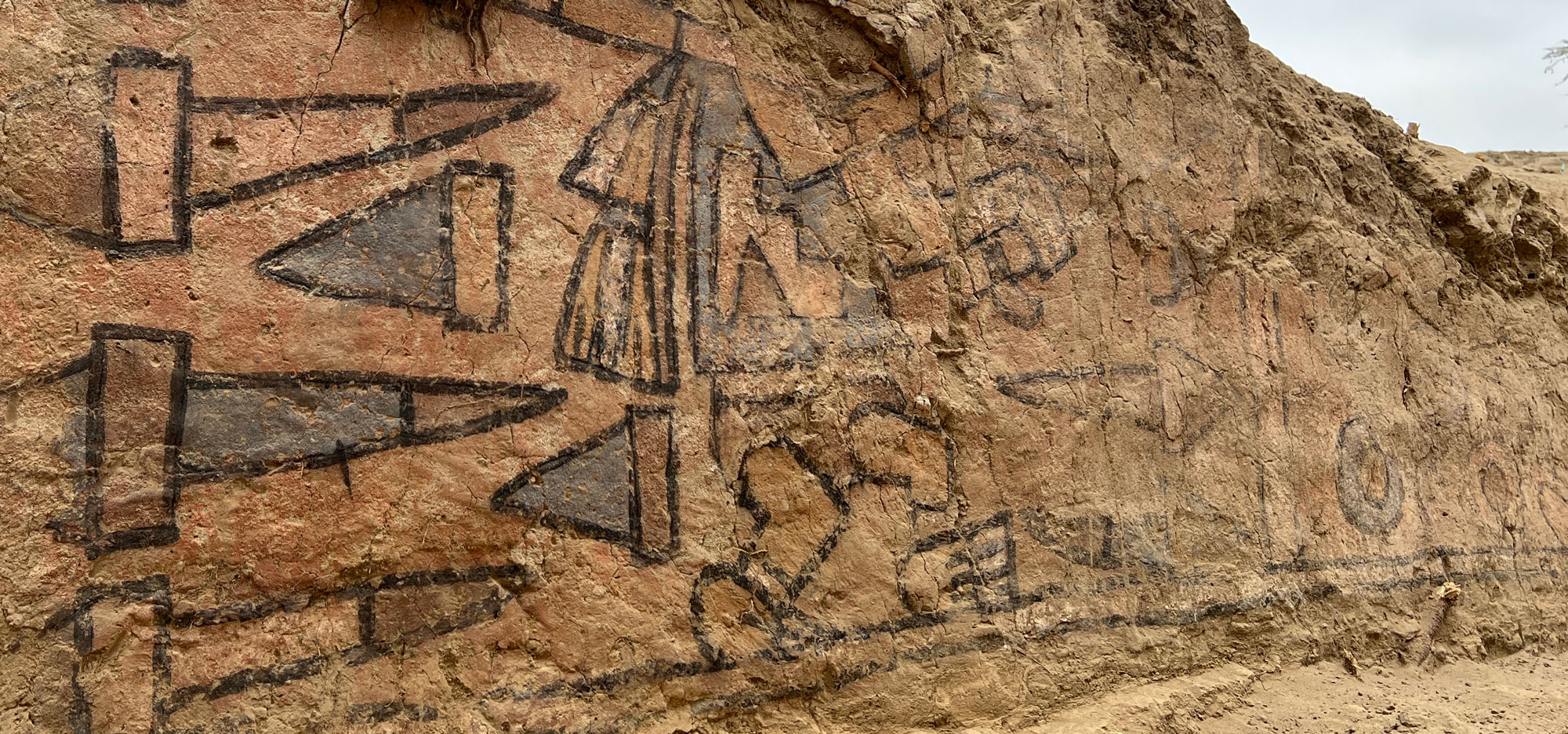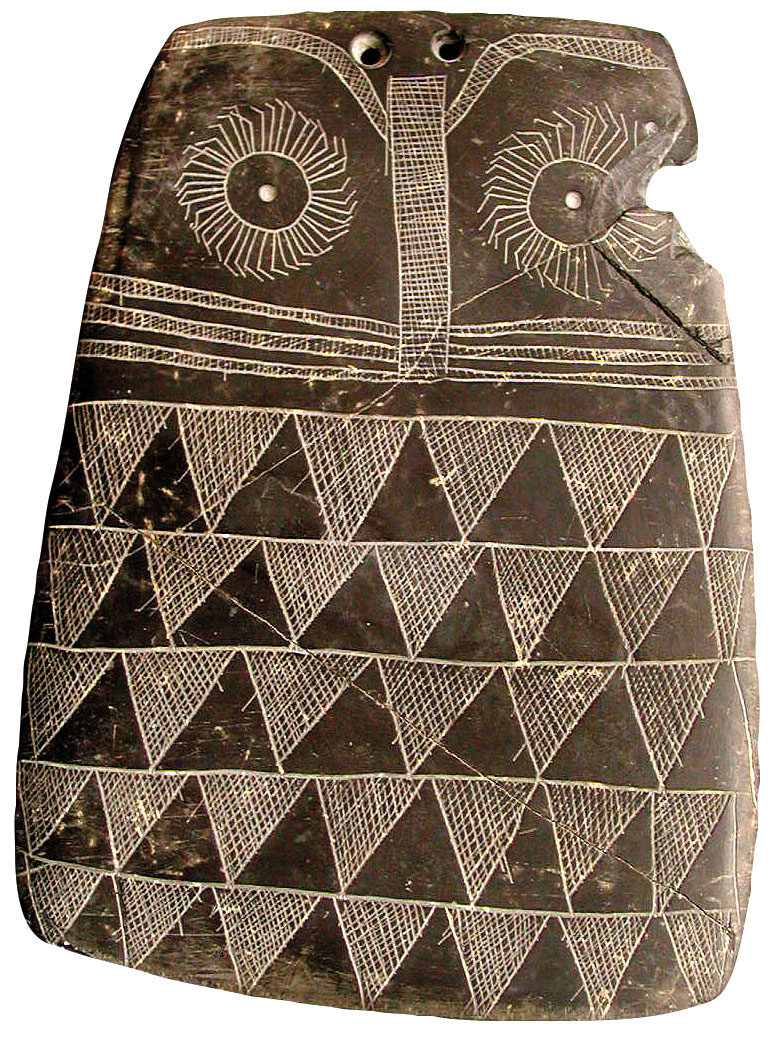
For several centuries, between 5,550 and 4,750 years ago, Iberian farmers pursued a curious pastime: On palm-sized, trapezoidal slates, they engraved designs portraying creatures with round eyes and triangle-patterned coats. “It’s a local phenomenon pertaining to the southernmost part of the Iberian Peninsula,” says biologist Juan J. Negro of the Spanish National Research Council. Nearly 4,000 of these plaques have been recovered from megalithic tombs, pits, and other Copper Age (ca. 4500–2500 B.C.) sites in Spain and Portugal since the nineteenth century, and many archaeologists have assumed the engravings played a role in rituals, perhaps by representing goddesses. Recently, Negro and his colleagues have questioned this long-standing view.
Negro, who studies the remains of birds recovered from archaeological sites, noticed avian traits in the designs. Instead of goddesses, he thinks the designs depict owls, and that they were carved by children. Artificial intelligence software designed to recognize images also identified one of the plaques as depicting an owl. The youngsters, suggests Negro, may have chosen to sketch a familiar creature that provided a community service by hunting rodents that infested cereal stores.



